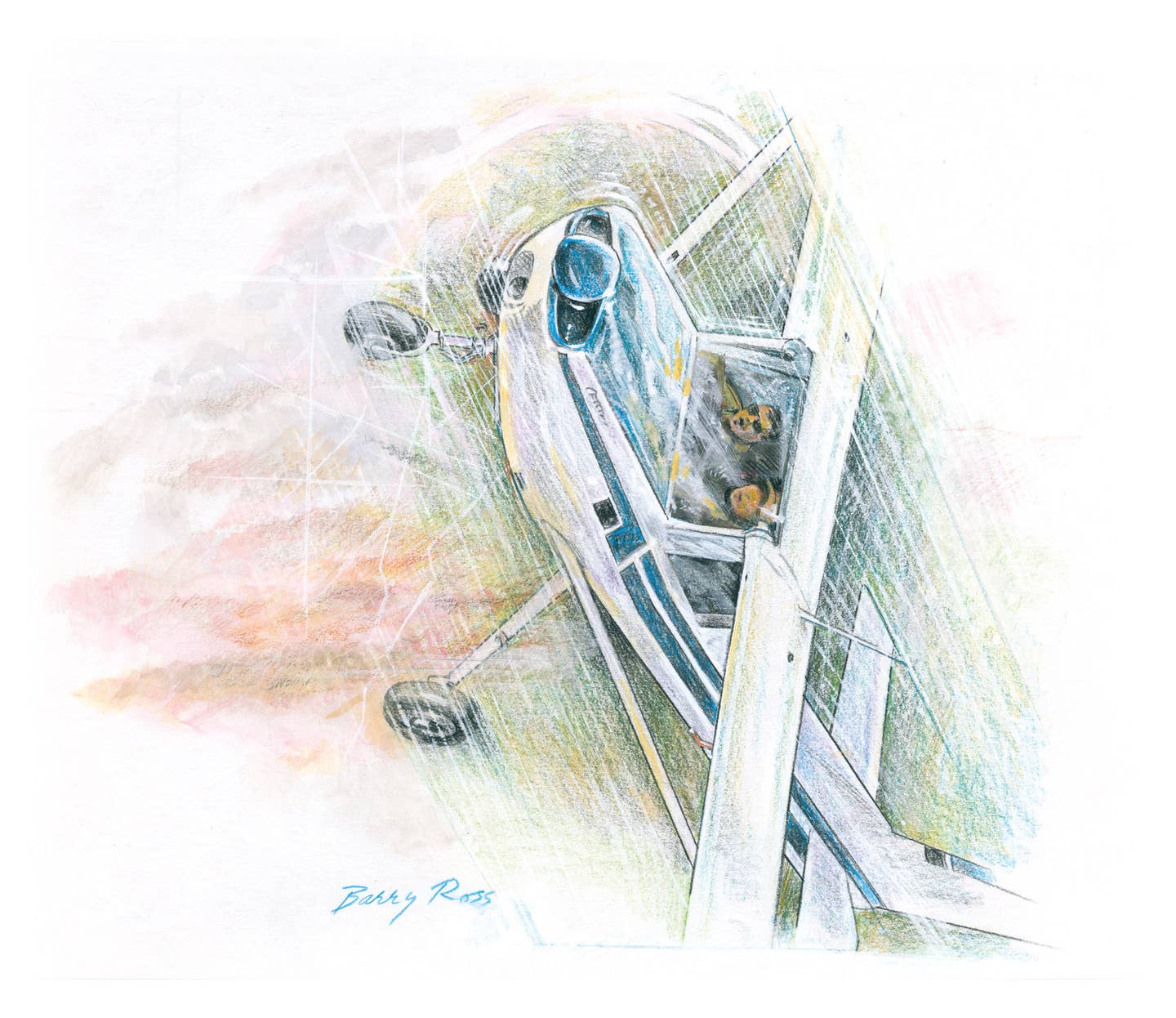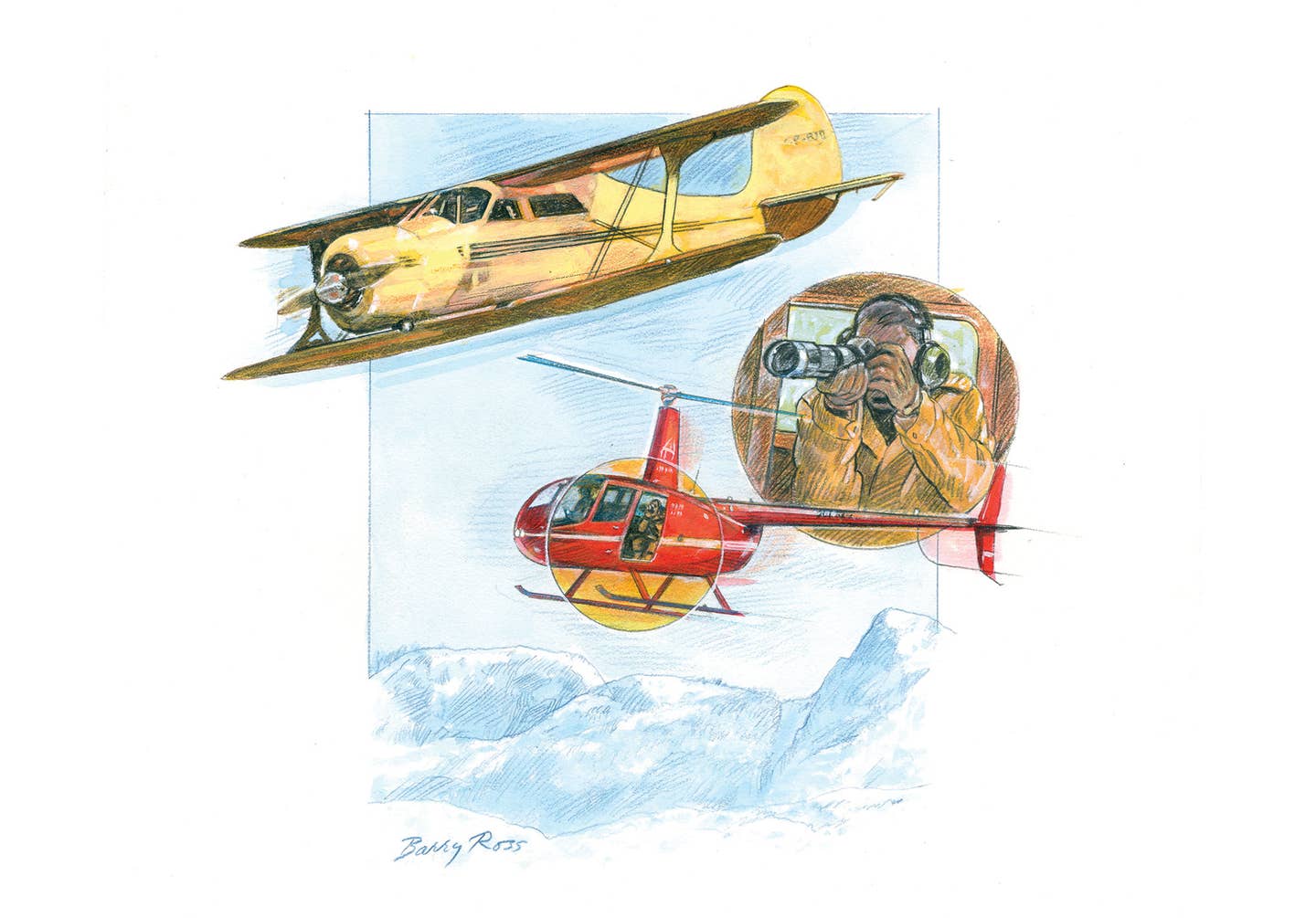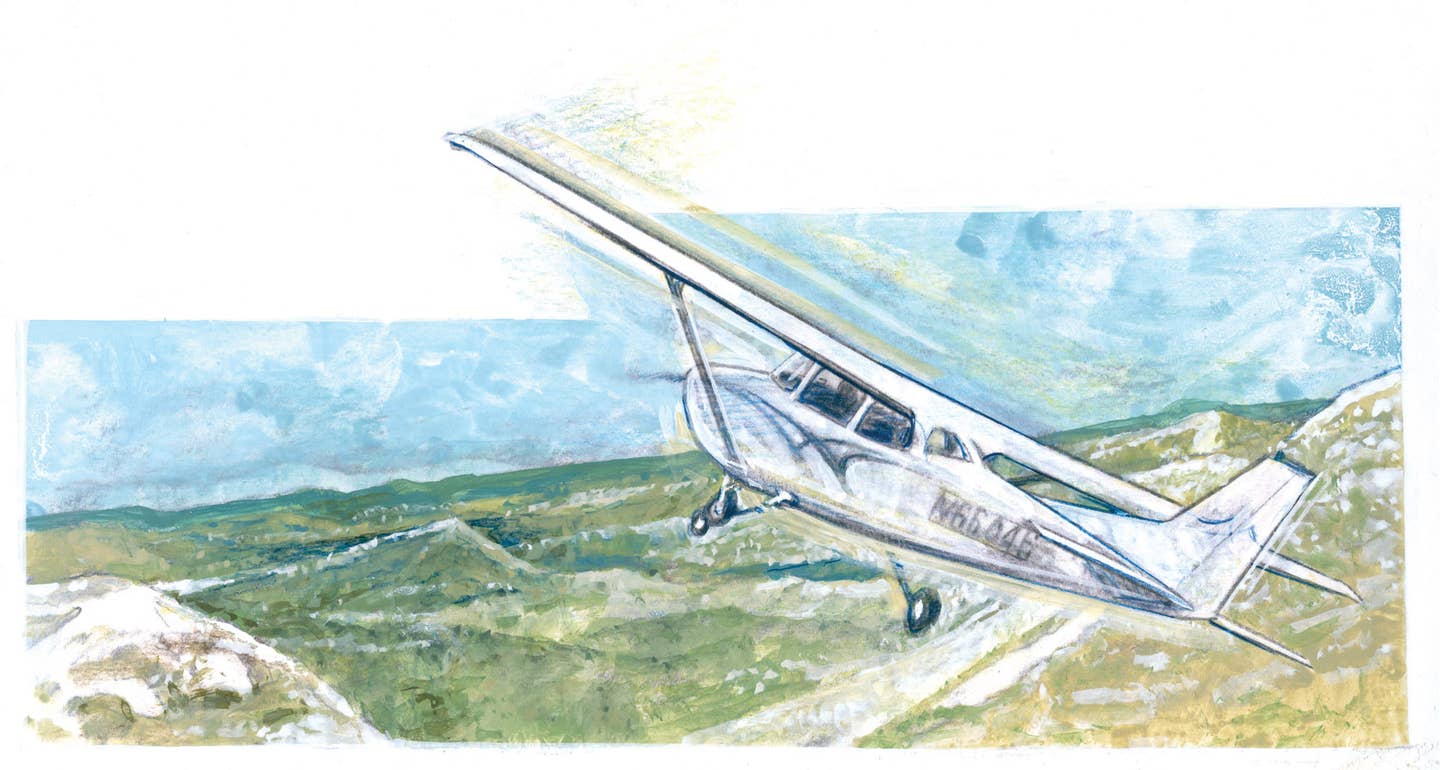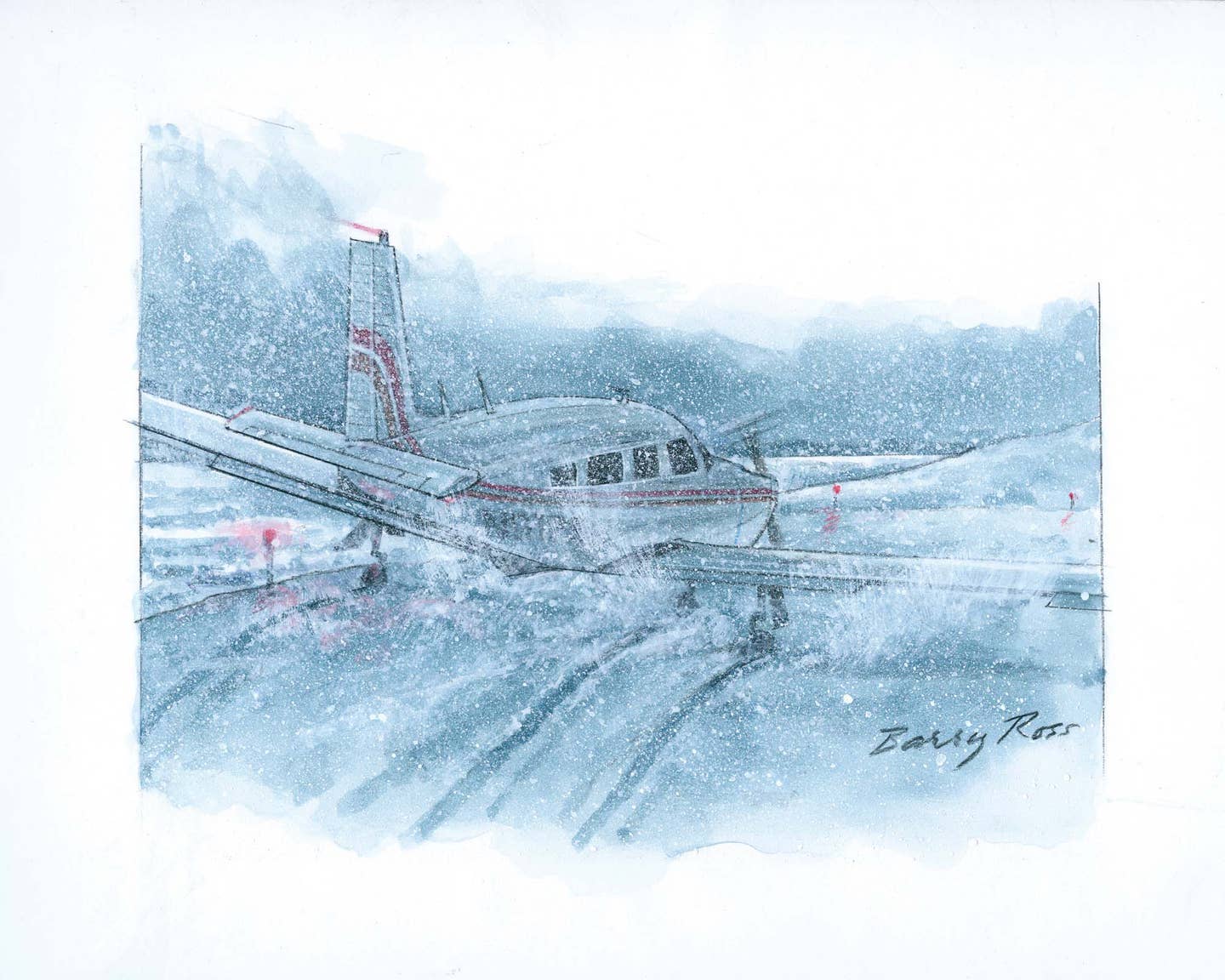A Tale of Two Engine Failures
Last March, a Beechcraft Bonanza A36TC was in cruise flight at 15,000 feet on the way to the annual aviation celebration known as Sun ’n Fun in Lakeland, Florida, when…

Last March, a Beechcraft Bonanza A36TC was in cruise flight at 15,000 feet on the way to the annual aviation celebration known as Sun ’n Fun in Lakeland, Florida, when the pilot noticed the engine power had dropped and the airplane began to slow.
A check of the manifold pressure confirmed the turbocharger was no longer providing the usual 30 inches of power. Instead, the gauge showed around 19 inches, which was what a normally aspirated engine should produce at that altitude. Suspecting a problem with the turbo system, pilot Josh Harnagel theorized an intake hose had come loose and feared an unplanned maintenance stop would interrupt the trip.
“I was somewhat frustrated and annoyed by the situation, but not overly concerned,” Harnagel said in a July interview.
Harnagel decided to head for Meridian, Mississippi (KMEI), anticipating a quick repair and a short delay in the business trip. At the time, he had just more than 2,500 hours of flight experience. He is a commercial pilot and a CFI. He learned to fly from his father, who owned a World War II trainer and taught him aerobatics, tailwheel, and lots of basic “stick-and-rudder” skills. Harnagel also knew the airplane well, having completed Bonanza type-specific training, including engine failure simulations. He also knew the maintenance history and was sure the airplane was well maintained.
- READ MORE: The Wisdom of Flying Tight Traffic Patterns
“Although I knew there was a possibility that the problem could be serious, I was confident this was probably a minor issue because there were no indications otherwise,” Harnagel said.
He began descending so the engine would (in theory) produce more power, when a routine scan of the engine gauges revealed zero oil pressure. “There was an immediate spike in my stress level as I realized the engine was likely to quit very soon,” he said.
Harnagel checked for nearby airports and changed the intended destination to Newton, Mississippi (M23). Suddenly, the engine began to shake violently as it entered its final convulsions, having dumped all the oil overboard.
“It seemed the engine was going to shake itself off the airplane,” he recalled. “I quickly shut the engine down by closing the throttle and turning off the fuel and mags, but the wild vibration continued for a bit before the engine finally seized completely. The vibration was so intense, I noticed screws falling out of the panel.”
With residual oil spilling onto the hot exhaust, there was a plume of gray smoke and the smell of burning oil, so Harnagel knew there was a possible engine fire. He began an emergency descent to hopefully decrease the likelihood of combustion. Realizing there was no fuel or ignition available, so the probability of engine fire was low, he resumed a “best glide” descent. However, the altitude lost in the emergency descent meant the Newton airport was no longer an option.
“I looked around and accepted that I would soon be landing somewhere other than on a runway,” he said
Noticing what appeared to be a suitable open field, he set up a spiraling approach while he communicated his situation to ATC. He had previously declared an emergency, so ATC was trying to give him a phone number to call. With everything going on, Harnagel wisely ignored this and returned to focus on flying the power-off approach to a field that now seemed somewhat short for the Bonanza. Flying the circling approach toward the tree line surrounding a cow pasture, he heard the “chirp” of the stall warning.
“[I told myself,] don’t stall! Don’t stall!” he said. “I waited to decide on whether to drop the landing gear or not until I could get a better idea of the surface conditions.”
With the field seeming firm and not too rough, he selected “gear down” on short final. The airplane’s touchdown was surprisingly soft, and it rolled rapidly over the uneven terrain before coming to a stop just before the row of trees at the end. Quickly exiting the airplane, Harnagel and his passengers began to reflect on what had happened. Subsequent inspection would reveal the failure of the turbocharger with the resulting loss of oil leading to a catastrophic failure and destruction of the engine.
- READ MORE: Least-Routine Float Landing Ever
Another pilot flying a Piper Cub in August 2017 had a different experience. Jason Archer was giving a lesson to a new student on a beautiful day in Massachusetts when the engine simply expired. No warning, no vibration, just a sudden quiet. Just before, the two had been enjoying the scenery and the simple pleasure of flying low and slow over the hills and forests.
At the time of the accident, Archer had been flying for about eight years, accumulating more than 4,000 hours with more than 2,500 hours of instruction given. He was flying almost daily in Cub-type airplanes, teaching basic skills to a variety of students.
Archer took the flight controls from the student and quickly ran through the short list of possible fixes. Switch tanks, carb heat “on,” ignition on “both.” No change, no power.
“I quickly went through [thinking] ‘this doesn’t make sense,’ to ‘I can fix this,’ to ‘I need to fly the airplane,’” Archer said.
Archer also remembers hearing the voices of his flight instructors saying, “Don’t panic. Fly the airplane. Work the problem.” He told me that was weird, but it helped keep him focused.
“I didn’t have much altitude, and there were no good options available, with a carpet of forest broken only by tiny fields, too small even for the Cub,” he said.
He briefly considered a lake but quickly rejected the option, knowing the airplane would likely flip over, making escape impossible. Archer remembered hearing that a landing into trees could work if done properly, and with no other viable options, he committed to putting the gliding, yellow Cub into the oncoming row of trees.
“I remember having this strange kind of intense focus where things seemed to happen really slowly,” he said. “I felt like I was in complete control of this event, even though thinking I had no control over the outcome.”
Maintaining a speed just above a stall, he flared at the last moment before seeing and hearing the crash of branches as the airplane came to a quick stop, 10 feet off the ground in a cherry tree. In the ensuing silence, he confirmed that both he and his passenger were OK. Help arrived soon in the form of a landowner with a ladder. Both shaken occupants freed themselves from the wreck and climbed to the ground.
Both Harnagel and Archer remembered feeling a flood of emotion afterward with many thoughts: “Did this really just happen?” “What did I do wrong?” and “What could I have done differently?” In Archer’s case, the engine had suffered a broken crankshaft gear that immediately stopped power output.
As I listened to both Harnagel and Archer tell their stories at EAA AirVenture this past summer, I couldn’t help but think back to my own experiences with similar events, including a couple of engine failures and one memorable flat spin. Over many thousands of hours and years of aviation experience, it seems inevitable that some bad things will happen. Do this long enough and there will be some bad days. I’ve often wondered about why some such events lead to destruction while others result in remarkable success. What can we learn? Are there survival skills to be passed along to help the next pilot who encounters similar in-flight emergencies?
So, after a bit of discussion and reflection, here are my thoughts.
First, as Archilochus said more than 2,500 years ago, “We do not rise to the level of our expectations. We fall to the level of our training.” This certainly rings true. Both Harnagel and Archer were able to perform in the face of significant danger, ignore the onrush of emotion, and focus on doing the next right thing. We tell pilots to think logically about the choices available, but in reality, given the fear and stress that come rushing in whenever we face the possibility of disaster, this is not easy. Again, through training, practice, and experience, we can improve the chances for success.
- READ MORE: Off Airport Landings Are Risky Business
Both pilots had the foundational skills needed to keep the airplane under control and fly it all the way to a stop while protecting themselves and their passengers, despite the fear and emotion that naturally accompanies such events. Only through proper and regular training can we depend on our abilities rather than simply hope for the best. It also illustrates the importance of proper training in basic aircraft control. The ability to fly the airplane instinctively, manage the energy, and visualize the resulting flight path is critical. Unfortunately, many instructors do not teach this, and many pilots never learn how to do it. On the day when they are required to call on those abilities, often they come up short.
There is another related aspect to this, which is to simply refuse to quit. One of the deadly hazardous attitudes for pilots is resignation. It is easy to just give up when the situation seems hopeless or overwhelming, but that mental strength to just keep trying, while pushing aside the emotional rush, allows us to have the best chance for success. Another consideration in all such events is the role of luck. As Laurence Gonzales writes in his excellent book Deep Survival: Who Lives, Who Dies, and Why, you can do everything right and still die.
So, perhaps we should give some thought to the types of flying we choose to conduct. Maybe flying at night or in low IMC in a single-engine airplane is something we might avoid. For others, the risk is acceptable with proper equipment and mitigation strategies. We all accept that there is inherent risk in our aviation activities, knowing sometimes events conspire against us. When that time comes, I hope, like Josh Harnagel and Jason Archer, you rise to the challenge and have a great story—and outcome—to share.
Editor's Note: This story originally appeared in the November/December 2023 issue of Plane & Pilot magazine. You can hear more of Harnagle’s account on ILAFFT episode 66.

Subscribe to Our Newsletter
Get the latest Plane & Pilot Magazine stories delivered directly to your inbox






